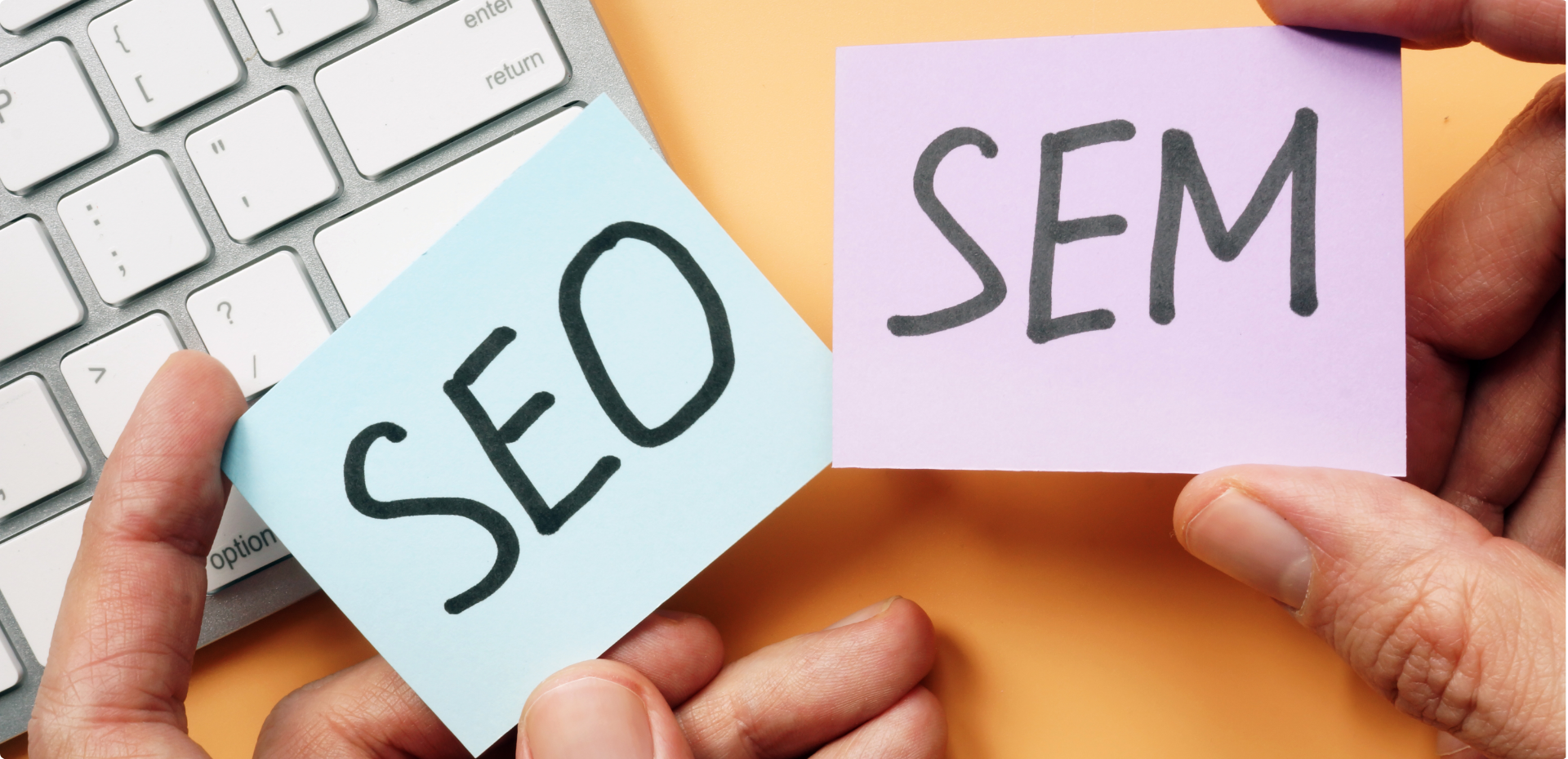Introduction
In the ever-competitive digital landscape, achieving online visibility and attracting website traffic is crucial for businesses of all sizes. Two prominent strategies often used to achieve this goal are Search Engine Optimization (SEO) and Search Engine Marketing (SEM). While both involve search engines, they differ significantly in approach and methodology. Understanding these differences is essential for businesses to navigate the world of online visibility and choose the most effective strategies for their needs.
Demystifying the Landscape: Understanding SEM and SEO
1. Search Engine Marketing (SEM):
SEM encompasses a broader range of strategies aimed at increasing a website’s visibility in search engine results pages (SERPs). It includes both organic and paid search results:
- Paid Search (PPC): This involves paying search engines to display your website’s ads at the top of SERPs for specific keywords. Popular platforms for PPC advertising include Google Ads, Microsoft Advertising, and Bing Ads.
- Organic Search (SEO): While technically a subset of SEM, SEO merits separate discussion due to its distinct nature. It focuses on optimizing your website and content to rank higher in organic search results, without directly paying search engines.
2. Search Engine Optimization (SEO):
SEO is an ongoing process of optimizing your website and content to improve its ranking in organic search results for relevant keywords. This involves various techniques, including:
- On-page optimization: Optimizing individual web pages for relevant keywords, including title tags, meta descriptions, header tags, and content quality.
- Off-page optimization: Building backlinks from other websites to increase your website’s authority and trust in the eyes of search engines.
- Technical SEO: Ensuring your website is crawlable, indexable, and mobile-friendly for optimal search engine performance.
Key Differences Between SEM and SEO:
| Feature | SEM | SEO |
|---|---|---|
| Nature of Results | Paid (PPC) and Organic | Organic only |
| Cost | Requires ongoing budget for paid advertising | Primarily involves time and effort |
| Control | High control over ad copy and targeting | Less direct control over ranking, relies on search engine algorithms |
| Speed of Results | Ads can appear immediately upon campaign launch | Organic ranking improvement takes time and consistent effort |
| Sustainability | Requires ongoing ad spend to maintain visibility | Organic ranking can be more sustainable with ongoing SEO efforts |
Choosing the Right Approach: When to Use SEM or SEO
The most suitable approach depends on your specific goals, budget, and timeline:
- Use SEM if:
- You need immediate results and want to reach a wider audience quickly.
- You have a specific target audience in mind and want to tailor your message accordingly.
- You have a dedicated budget for paid advertising.
- Use SEO if:
- You are looking for a cost-effective, long-term solution for organic visibility.
- You are willing to invest time and effort in content creation and website optimization.
- You are focused on building a sustainable online presence with long-term brand value.
Combining SEM and SEO: A Powerful Strategy
While SEM and SEO are distinct strategies, they can be effectively combined for a comprehensive online marketing approach. This integrated approach leverages the strengths of both:
- SEM can drive immediate traffic and brand awareness, while SEO builds long-term organic visibility.
- Data insights from paid search campaigns can inform keyword selection and content strategies for SEO.
- A strong SEO foundation can improve the quality score of your paid ads, potentially leading to cost reduction.
Conclusion: Charting Your Course in the Digital Landscape
Understanding the fundamental differences between SEM and SEO empowers you to make informed decisions about your online marketing strategy. Consider your specific goals, resources, and timeline to determine the most suitable approach. Remember, both SEM and SEO offer valuable tools, and combining them strategically can maximize your online visibility and drive sustainable growth in the dynamic digital landscape.






